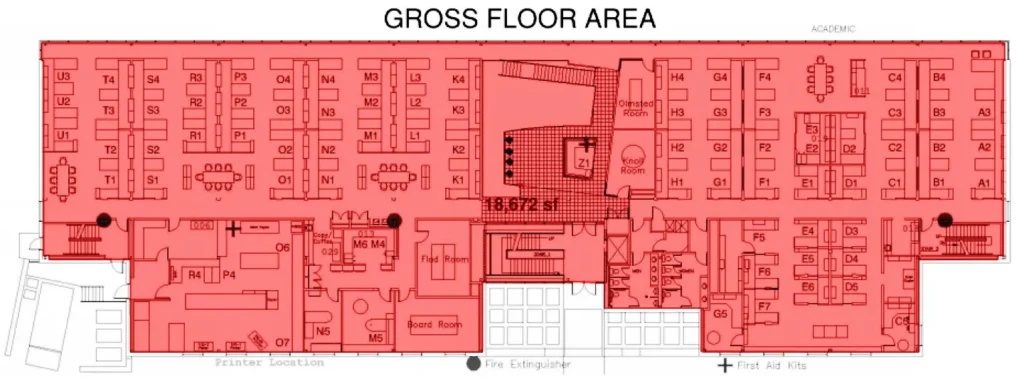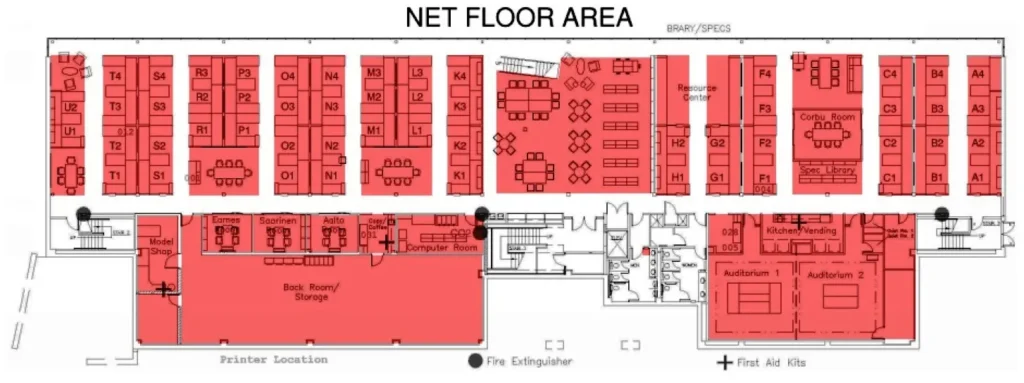OCCUPANT LOAD CALCULATION
If you want to know about the classification of building or refuge area or parking and turning radius, please click the link.
Occupant load calculation is the process of determining the maximum number of people that a building, room or space can accommodate safely. This calculation is typically based on building codes, which consider factors such as the floor area, means of egress, and fire safety.
The purpose of occupant load calculation is to ensure the safety of the occupants in case of an emergency, such as a fire. The calculation takes into account the use of the space, the occupancy classification, and the design and construction of the building. The number of occupants is used to determine the minimum number of exits, the width of exits, the size of fire suppression systems, and other safety features that must be provided.
The occupancy classification is based on the intended use of the space. For example, a space used for assembly, such as a theater or auditorium, will have a different occupancy classification than an office or a residence. The occupancy classification and the intended use of the space determine the occupant load factor, which is used to calculate the number of occupants.
1) Occupant load (definition)
Occupant Load= The total number of persons that might occupy a building or portion thereof at any one time.
Occupant loadmeans the total number of persons that may occupy a workplace or portion of a workplace at any one time. The occupant load of a workplace is calculated by dividing the gross floor area of the workplace or portion of the workplace by the occupant load factor for that particular type of workplace occupancy.
1) Occupant load calculation for design a building
For determinant the exits needed, variety the amount the quantity ofpersons inside any floor space or the occupant load shallbe supported the particular number of occupants declared,however in no case but that per table below.

Note – 1
Floor Area (Gross floor area (GFA))
- The area of the floor withinthe within perimeter of the outside walls of the floor ofthe building into account with no deductionsfor corridors and passageways, stairs, closets, thicknessof interior walls, columns, lifts and building shafts orother options.

Net Floor Area (NFA)
- The actual occupied space not together with unoccupied accessoryareas like corridors, stairways, rest room rooms, mechanicalrooms and closets.

Note – 2
- Occupant load in dormitory parts of homes for the aged, orphanages, insane asylums, etc, wherever sleeping accommodation isprovided, shall be calculated at not less than7.5 m2gross floor area/person.
Note – 3
- Occupant load in dormitory parts of homes for the aged, orphanages, insane asylums, etc, wherever sleeping accommodation isprovided, shall be calculated at not less than7.5 m2gross floor area/person.
Note – 3
- These shall embrace gymnasium, Ping-Pong area, billiard parlor and different gambling rooms, library, athletic facility and like.
Note – 4
- In case of assembly occupancy having mounted seats, the occupier load shall be determined by multiplying the amount of seats by 1.2.
Note – 5
Car parking areas beneath occupancy aside from storage shall even be 30 M2 per person.
- The occupier load of a mezzanine floor discharging to afloor below shall be adscititious thereto floor occupancy andthe capacity of the exits shall be designed for the totaloccupancy load therefore established.
- The occupier load of each story thought-about individually shall be needed to be utilized in computing the number of suggests that of egress at each story, as long as the required variety of suggests that of egress isn’t decreased in the direction of egress travel.
- The assembly occupancies and call centres shall berequired to display, limiting occupant load detailspositioned in a very conspicuous place close to the doorway ofeach of such individual occupancy to avoid possibleovercrowdingand overloading.
- Thedisplayshallpreferably be engraved on a metal plate of not less than300 mm × 200 mm, with letters of height and width notless than 50 mm, with detail of occupancy, area andoccupancy load (see figure below).

- The capacity of any open mezzanine/balcony shall beadded to the capacity of the floor below for the purposeof determining exit capacity.
Calculation of Occupant load (number of person)

Assume Gross floor area = 500 sq.m. Occupant load factor given abovefigure.
Residential= 12.5 sq.m. / person
Educational= 4.0 sq.m. / person
—– = ——–
Occupant load (number of person)
For Residential= 500/12.5 = 40persons
For Educational= 500/4 = 125persons
In conclusion, the occupant load is a critical factor in building design and safety. Proper calculation of the occupant load is crucial for ensuring that a building is safe, complies with codes and regulations, and provides an appropriate amount of space for its intended use.
Related video
As an expert in building design and safety regulations, with a comprehensive understanding of occupant load calculations, I can provide valuable insights into the critical aspects mentioned in the article. My expertise is derived from extensive hands-on experience in architectural design and adherence to building codes. Let's delve into the concepts discussed in the article:
1. Occupant Load Calculation:
- Definition: Occupant Load is the total number of persons that might occupy a building or a portion thereof at any one time. It is a crucial parameter for ensuring safety during emergencies.
- Calculation: The occupant load of a workplace is determined by dividing the gross floor area by the occupant load factor specific to the type of occupancy.
2. Occupancy Classification:
- Definition: Occupancy classification is based on the intended use of a space. Different spaces, like theaters, offices, or residences, have distinct occupancy classifications.
- Determinants: The purpose of the space, occupancy classification, and the design and construction of the building influence occupant load calculations.
3. Floor Area:
- Gross Floor Area (GFA): The total floor area within the perimeter of the outside walls of the building.
- Net Floor Area (NFA): The actual occupied space, excluding unoccupied accessory areas like corridors and mechanical rooms.
4. Occupant Load Factors:
- Calculation Basis: The occupant load factor is specific to the type of workplace occupancy (e.g., residential, educational).
- Examples: Dormitory areas in homes for the aged have a minimum occupant load factor of 7.5 m² gross floor area/person.
5. Special Cases:
- Assembly Occupancy: The occupant load for fixed-seat assembly occupancy is determined by multiplying the number of seats by 1.2.
- Mezzanine Floors: The occupier load of a mezzanine floor is added to the floor below for exit capacity determination.
6. Car Parking Areas:
- Car parking areas under occupancy, excluding storage, should be 30 m² per person.
7. Display Requirements:
- Assembly occupancies and call centers must display occupant load details prominently to prevent overcrowding.
- Display specifications include a metal plate with specific letter dimensions, detailing occupancy, area, and occupant load.
8. Calculation Example:
- Provided an example calculation: Assume Gross Floor Area = 500 sq.m.
- Residential Occupant Load = 500/12.5 = 40 persons
- Educational Occupant Load = 500/4 = 125 persons
9. Conclusion:
- Emphasizes the critical role of occupant load in building design and safety.
- Highlights the importance of proper calculation for code compliance, safety assurance, and ensuring adequate space for the intended use.
In conclusion, the occupant load calculation is a multifaceted process crucial for building safety and compliance. It encompasses various factors, from floor area definitions to specific occupancy classifications, all aimed at ensuring the well-being of occupants in emergency situations.